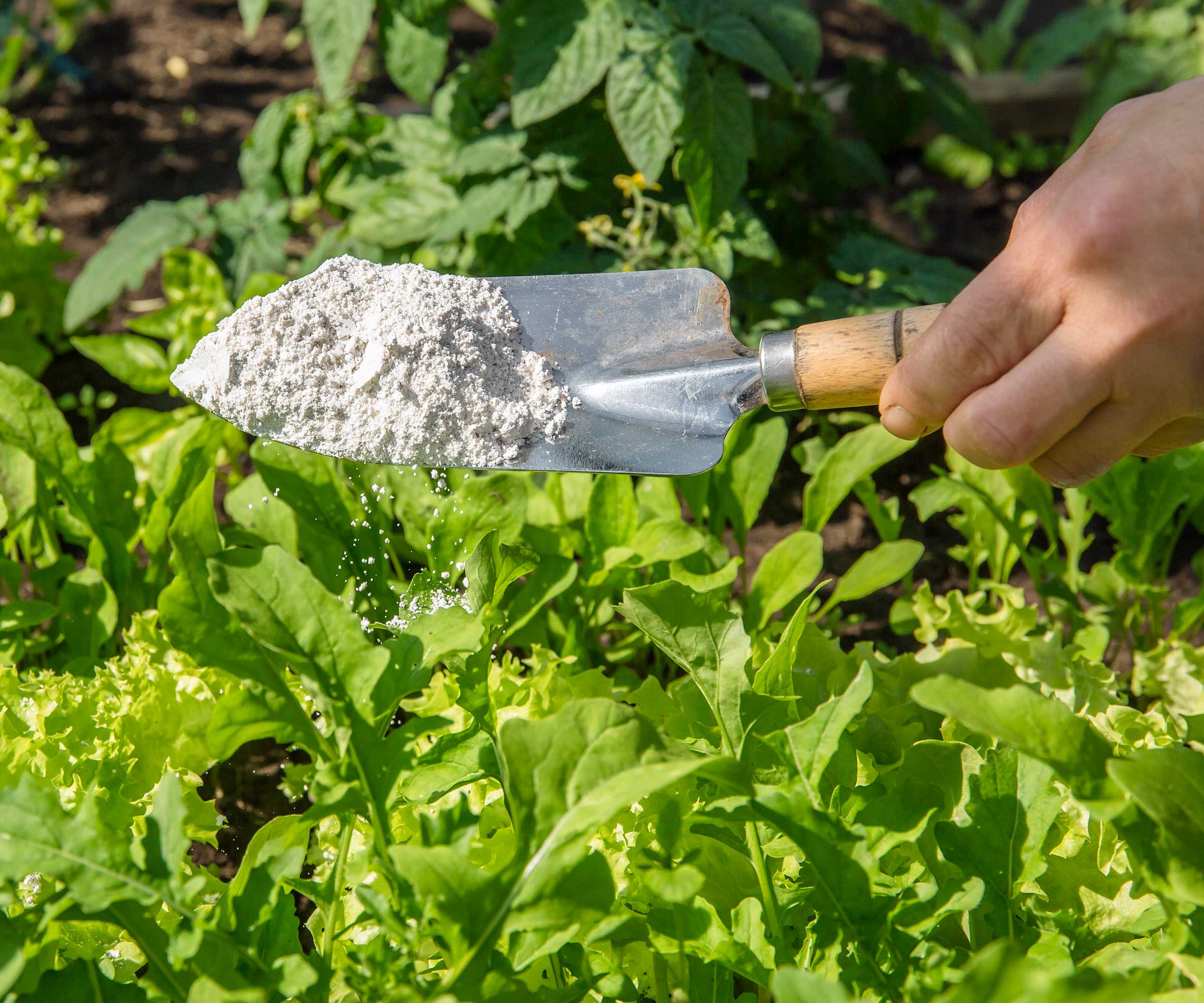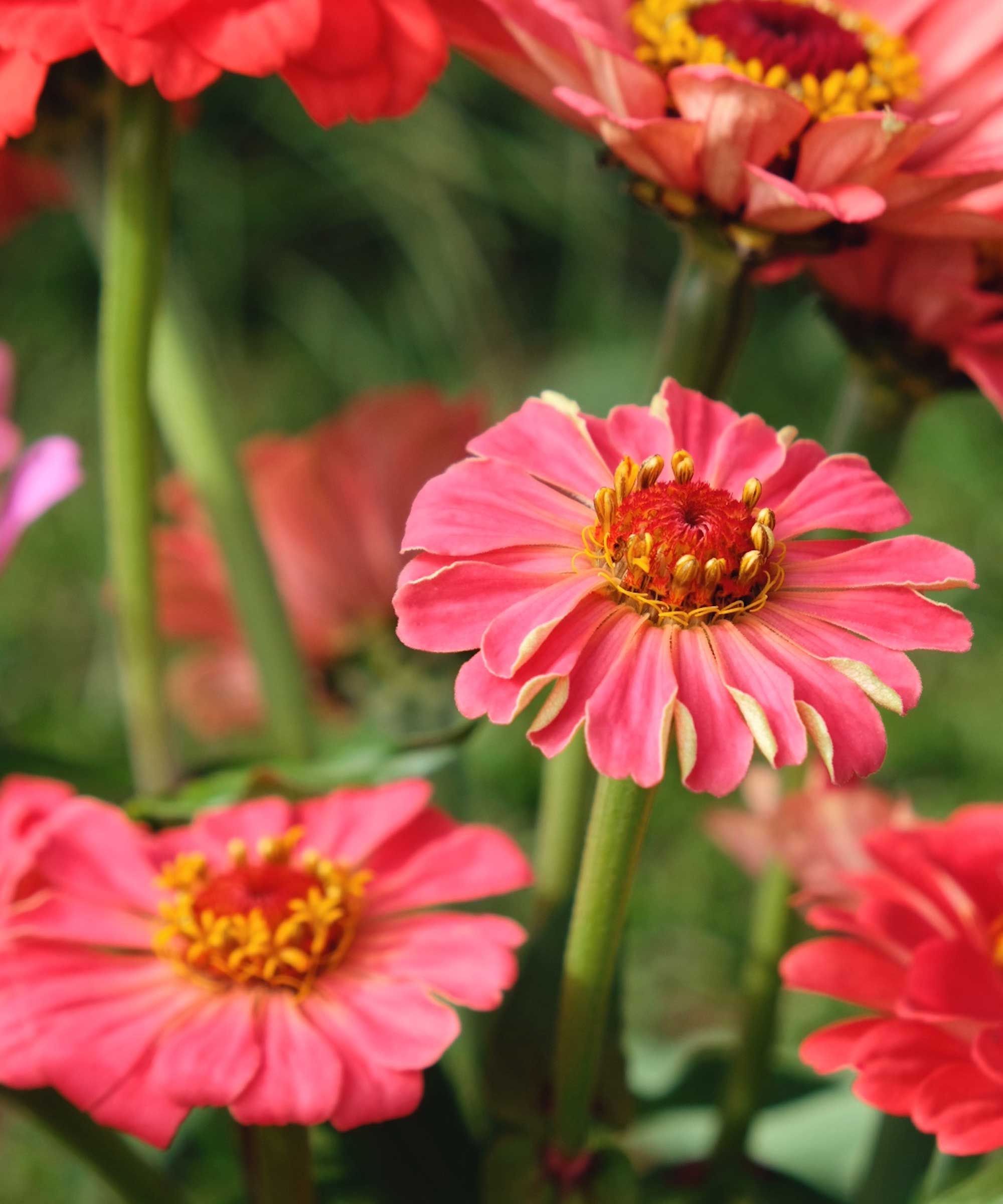
Spotting holes in your zinnias is disheartening, especially if you've carefully raised them from seed. If the culprits are nowhere to be seen in the light of day, it can be even more frustrating – and difficult to know what you're dealing with.
The truth is, a number of garden pests can be a burden at night when growing zinnias. Slugs, snails, and earwigs tend to be nocturnal and are often to blame, as well as moths that lay eggs, resulting in caterpillars. On the bright side, a few simple tricks can stop them in their tracks, keeping these beautiful bloomers protected.
I asked pest-control experts for their insights, and below, they share their advice. Whether you're growing zinnias for a flourishing cut flower garden or a vibrant container, these tips are sure to come in handy.
Hand-pick pests

Nicole Carpenter, president of Black Pest Prevention, says, 'The best natural way to keep your zinnias safe at night is to go out with a flashlight about 30 to 60 minutes after sunset and hand-pick slugs, snails, and earwigs.' Once collected, each one can be dropped into a jar of soapy water, which will kill them. 'It sounds old-school, but it works,' she says.
It's not a one-and-done solution, however – Nicole recommends doing it every evening for about a week or two to really knock down the pest population.
When hand-picking snails and slugs, it's important to wear protective gloves. As Dr. Tracy Ellis, an entomologist at FarmSense, explains, this is due to their potential for carrying human-infective nematodes called rat lungworm. Wear gloves if handling any earwigs you come across, too, as they can pinch or even bite when under threat.
Apply diatomaceous earth

For tackling slugs, earwigs, and cutworms, Brett Bennett, director of operations at Purcor Pest Solutions, recommends using diatomaceous earth.
Emma Grace Crumbley of Mosquito Squad Plus also suggests it, explaining how the fine powder dries out insects and cuts through their exoskeletons.
'Sprinkle it on the top of your soil around your zinnias and re-apply whenever it gets wet, because it doesn’t work when wet,' Brett says. Want to give it a go? You can shop for diatomaceous earth from Amazon.
Cover zinnias with netting

You'll also need to watch out for flying pests around your zinnias. Tracy explains that moths can fly into the flower bed to lay eggs, and these then develop into zinnia-eating caterpillars.
'These caterpillars are usually discovered too late as they have already reached a large size and have almost completed their feeding,' she says. Her recommended solution is to protect the flower bed from evening- and night-flying insects with garden netting. Try using this all-purpose garden fabric from Gardener's Supply Company at Amazon, for instance.
'Netting will also protect your zinnias from Japanese beetles and Asiatic garden beetles that may feed at night during the hot days of summer,' Tracy continues. Just remember to check under the net regularly, as Emma Grace notes – 'Smaller pests like mites caught under the net may continue to feed and go unnoticed.'
Try copper tape and cardboard collars

There are physical barriers you can put in place to deter creepy crawlies from your zinnias. For instance, Tracy suggests applying copper tape, which the snails and slugs will not cross, around plant beds. A layer of crushed eggshells or even coffee grounds spread around the base of your plants may also be effective.
Cutworms, a type of caterpillar that hide in the soil during the day, can be deterred by cardboard collars. As Tracy explains, these encircle the base of the plant one inch below and above the soil.
Create a barrier around containers or even raised beds to deter slugs and snails from eating precious plants.
FAQs
How can watering affect zinnia pests?
Emma Grace notes how zinnia pests, like earwigs, slugs, and snails, like to find areas of high moisture and cover to hide in. With this in mind, she warns against overwatering, as too much moisture can attract them. 'Zinnias need to be watered regularly, but they are not as water-dependent as other flowering plants.'
Can you use slug bait to protect your zinnias?
Many slug baits can be harmful to other wildlife, pets, and the environment. However, you could consider one with the active ingredient of iron phosphate, such as Monterey Sluggo Slug and Snail Killer (available from Amazon), as Tracy suggests. When used according to label instructions, it's safe for pets and wildlife, and it's even suitable for organic gardening.
Alternatively, you could lay beer traps as a slug control method, which is an easy DIY solution.
Along with proper pest management in place, there are other ways to get the most from these summer-flowering favorites. The tips in our guide on how to keep zinnias blooming are definitely worth a spot on your to-do list, for instance. And, if you're adding zinnias to a mixed border, note there are certain plants to never grow alongside them.







